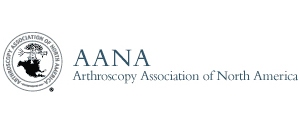Shoulder Surgeries
The shoulder is a highly movable body joint that allows various movements of the arm. It is a ball and socket joint, where the head of the humerus (upper arm bone) articulates with the socket of the scapula (shoulder blade) called the glenoid. The two articulating surfaces of the bones are covered with cartilage, which prevents friction between the moving bones. The cartilage is lubricated by synovial fluid. Tendons and ligaments around the shoulder joint provide strength and stability to the joint.
When the cartilage is damaged, the two bones rub against each other resulting in severe pain, loss of movements, tenderness, swelling and stiffness of the joint. Surgery is performed to relieve these symptoms and regain movements.
Shoulder surgeries performed by Dr. Toman includes:
-
Total Shoulder Replacement
Total shoulder replacement surgery is performed to relieve pain, swelling and stiffness of the joint. In this surgery, the damaged articulating parts of the shoulder joint are removed and replaced with artificial prostheses. Replacement of both the humeral head and the socket is called a total shoulder replacement.Read More
-
Reverse Shoulder Replacement
Reverse total shoulder replacement, is an advanced surgical technique specifically designed for rotator cuff tear arthropathy, a condition where the patient suffers from both shoulder arthritis and a rotator cuff tear.Read More
-
Rotator Cuff Repair
Rotator cuff tear is best viewed on magnetic resonance imaging. Symptomatic relief may be obtained with conservative treatments - rest, shoulder sling, pain medications, steroidal injections and certain exercises. However, surgery is required to fix the tendon back to the shoulder bone. Rotator cuff repair may be performed by open surgery or arthroscopic procedure. Newer, advanced surgical techniques have been developed to minimize pain and recovery time.Read More
-
Revision Shoulder Replacement
Total shoulder replacement is the replacement of the head of the humerus (upper arm bone) and the glenoid cavity (cavity of the shoulder blade) into which the humerus fits, with artificial prostheses to relieve pain, swelling and stiffness caused due to damage of cartilage at the articulating surfaces. The procedure usually has good results, but a revision surgery may occasionally be necessary due to persistent pain, infection, stiffness, weakness, instability, hardware loosening, malposition or fracture.Read More




